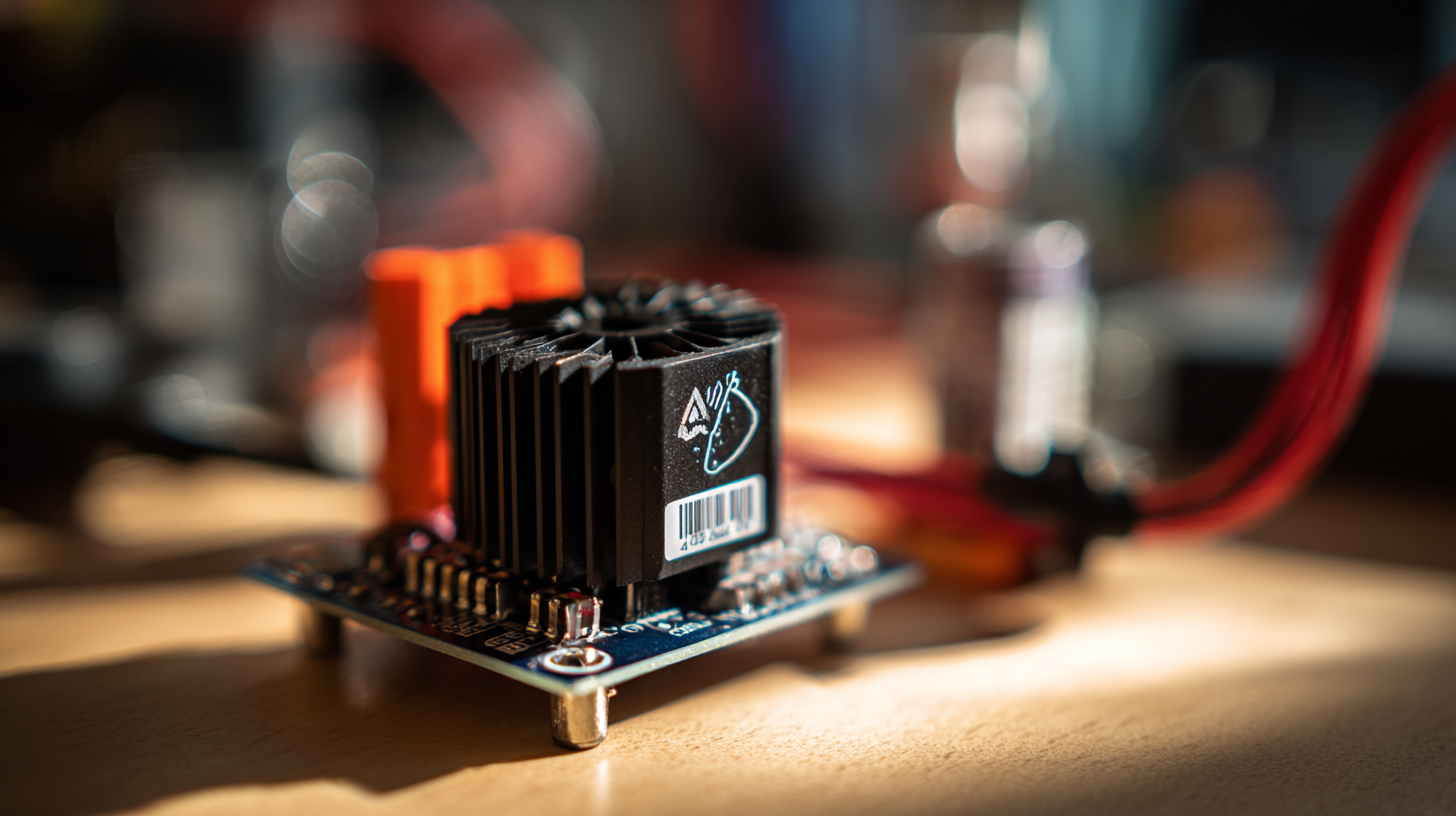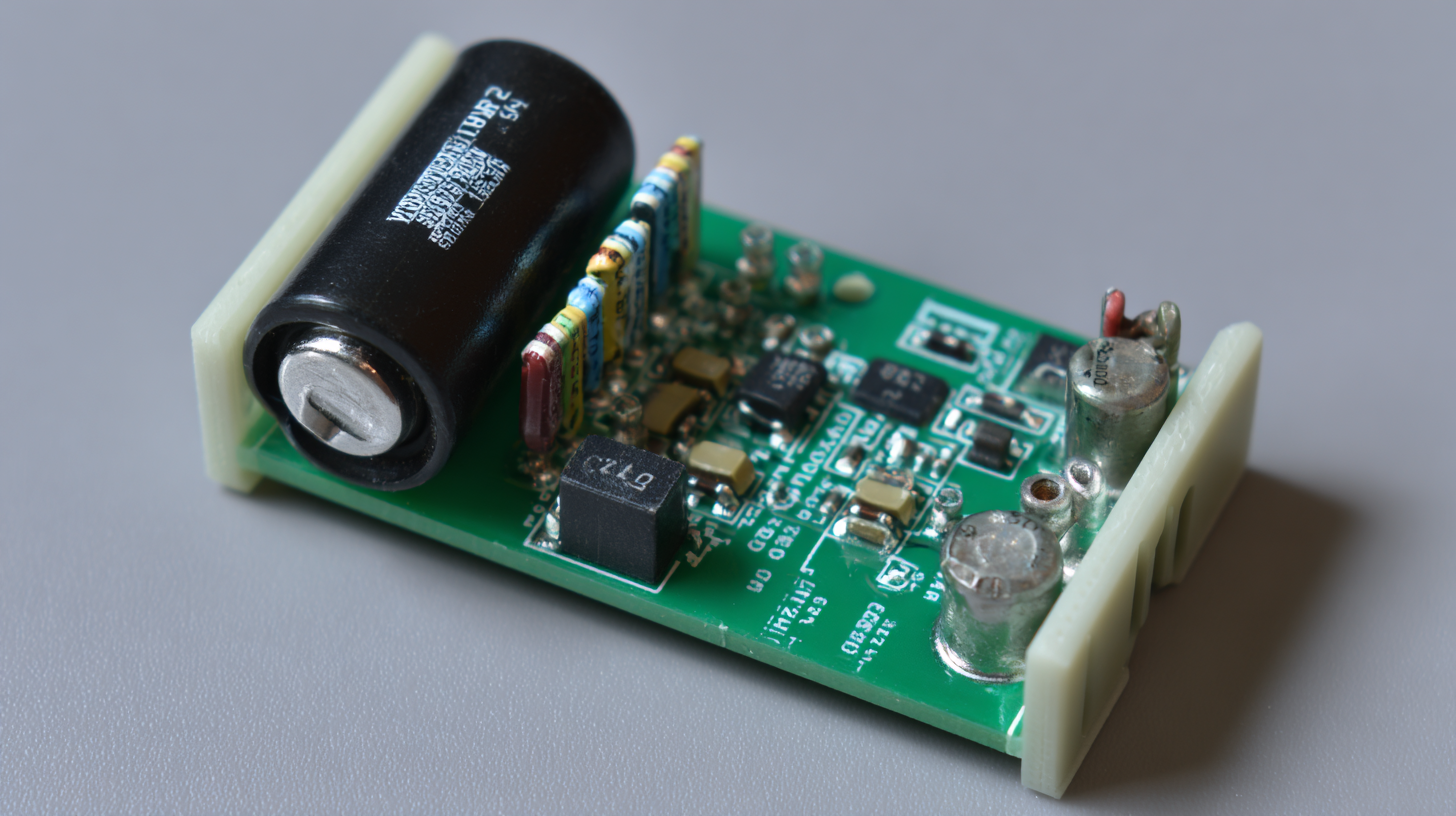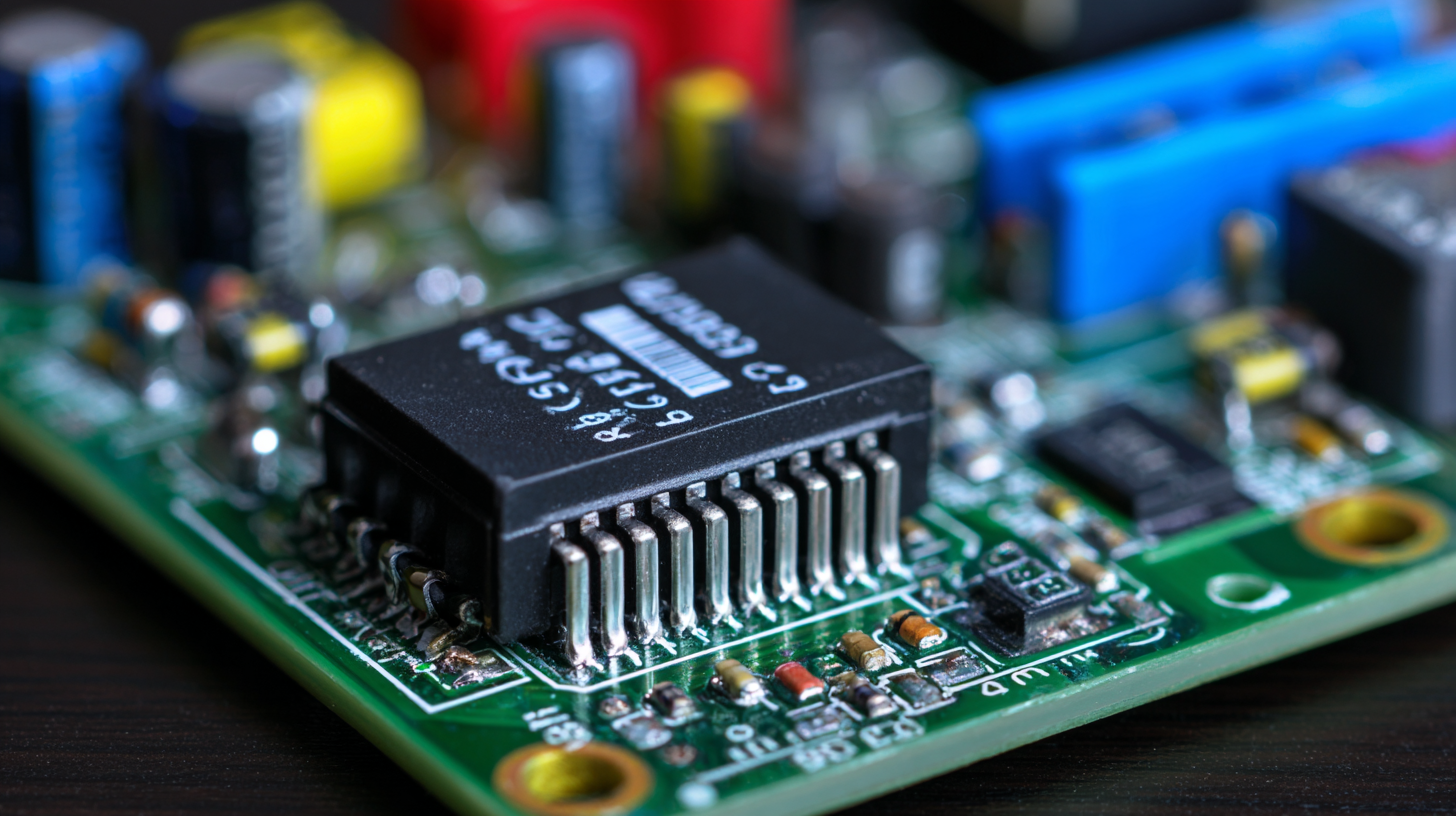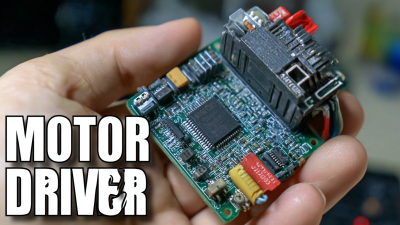
-
Home
-
Products
-
Application
-
Documents
-
News
-
Blog
-
Blog
-
Sinsegye
Leave Your Message
-
Wechat OA

-
 Baijia Hao
Baijia Hao



 Baijia Hao
Baijia Hao

 In the realm of robotics and automation, selecting the appropriate motor driver is a critical decision that significantly impacts the performance and efficiency of a project. According to a recent industry report by MarketsandMarkets, the global motor driver market is projected to grow from $4.5 billion in 2020 to $7.2 billion by 2025, reflecting an annual growth rate of 10.1%. This growth is driven by the increasing demand for precision and control in applications ranging from industrial machinery to consumer electronics. A suitable motor driver not only ensures optimal performance of the motors but also enhances energy efficiency and reduces operational costs. As various motor types, from brushed to brushless, present unique requirements, understanding the specifications and functionalities of motor drivers is essential for engineers and developers aiming to achieve their project's goals effectively.
In the realm of robotics and automation, selecting the appropriate motor driver is a critical decision that significantly impacts the performance and efficiency of a project. According to a recent industry report by MarketsandMarkets, the global motor driver market is projected to grow from $4.5 billion in 2020 to $7.2 billion by 2025, reflecting an annual growth rate of 10.1%. This growth is driven by the increasing demand for precision and control in applications ranging from industrial machinery to consumer electronics. A suitable motor driver not only ensures optimal performance of the motors but also enhances energy efficiency and reduces operational costs. As various motor types, from brushed to brushless, present unique requirements, understanding the specifications and functionalities of motor drivers is essential for engineers and developers aiming to achieve their project's goals effectively.
When selecting the appropriate motor driver for your project, it's crucial to understand the different types of motors available: DC, stepper, and servo motors. DC motors are commonly used for their simplicity and ease of control, making them ideal for applications like fans and pumps. According to a report by MarketsandMarkets, the DC motor market is expected to reach $25 billion by 2026, reflecting their widespread applicability in various industries.
Stepper motors, on the other hand, are favored for precise positioning and repeatability, often used in 3D printers and CNC machines. They operate on discrete steps, allowing for highly controlled movements. A report from Research and Markets indicates that the stepper motor market is projected to grow by 6% annually, driven by the demand for automation in manufacturing processes. It's essential to assess your project's need for precision versus speed to choose between these options effectively.
Tip: For simple applications requiring basic movement without precise control, a DC motor might be sufficient. However, if your project demands high precision, consider investing in a stepper motor for optimal performance. Additionally, when selecting a motor driver, ensure it matches the power requirements and control interface of your chosen motor type for seamless integration.
| Motor Type | Voltage Range | Current Rating | Control Method | Typical Applications |
|---|---|---|---|---|
| DC Motor | 3V - 24V | Up to 30A | Analog PWM | Fans, Pumps, Robotics |
| Stepper Motor | 4.5V - 12V | Up to 2A | Pulse Width Modulation (PWM) | 3D Printers, CNC Machines |
| Servo Motor | 4.8V - 6V | Up to 1.5A | Pulse Code Modulation | Robotics, Remote Control |
When selecting a motor driver for your project, one of the most critical factors to evaluate is the current rating. The current rating determines the maximum continuous current that the driver can handle without overheating or failing. According to the International Electrotechnical Commission (IEC), a motor driver should ideally operate at no more than 80% of its rated current to ensure reliability and longevity. This principle is vital when dealing with applications that require high precision and sustained operation, such as robotics and automation systems.
Moreover, the current requirement can vary significantly based on the type of motor used. For instance, a typical DC motor may require a current rating of around 2A to 10A, while stepper motors often demand even higher ratings, sometimes exceeding 3A per phase. A 2021 report by the Motor Control Association highlights that selecting a driver with an appropriate current rating can enhance efficiency by up to 25%, reducing energy consumption and minimizing heat generation. Understanding the specific demands of your motors will enable you to match them with a driver capable of optimizing performance and ensuring project success.

When selecting a motor driver for your project, it is critical to prioritize the voltage requirements, as mismatching can lead to inefficiency or component damage. Understanding the voltage specifications of your motor is essential, as most DC motors operate optimally within a specific voltage range. According to a recent report by the International Electrotechnical Commission (IEC), approximately 70% of motor failures are attributed to incorrect voltage application, highlighting the importance of careful assessment in your selection process.
Additionally, it is vital to consider the power supply capabilities alongside the motor voltage requirements. For instance, if you're using a stepper motor rated at 12V, your driver should be capable of handling at least 15V to accommodate any fluctuations and provide adequate performance. Data from a 2022 IEEE publication indicated that under-voltage conditions could result in a 30% decrease in torque, which underscores the necessity of ensuring that your driver not only matches the rated voltage but can also deliver stable output throughout your application. This careful matching process is essential for ensuring optimal performance and longevity of your motor system.
When selecting a motor driver for your project, it’s essential to consider key features that will optimize performance and ensure reliability. PWM control is one of the most crucial features, allowing you to adjust the speed of the motor efficiently. By modulating the power supplied to the motor, PWM minimizes energy loss and generates less heat compared to other methods of speed control. This fine-tuning capability is particularly valuable in applications requiring varying speeds or precise movements.
Another important aspect is thermal protection, which safeguards both the motor and the driver from overheating. Many motor drivers include built-in thermal shutdown mechanisms that automatically turn off the driver when temperatures exceed safe levels. This feature not only prolongs the lifespan of the components but also adds an extra layer of safety to your project. Lastly, feedback integration can enhance performance by providing information on the motor's position or speed, enabling closed-loop control systems that improve accuracy and responsiveness. Therefore, when choosing a motor driver, prioritize these features to meet your project's specific requirements effectively.
This chart compares critical features of different motor drivers, focusing on PWM Control, Thermal Protection, and Feedback Systems. It helps in understanding how these features are prioritized across various models.
 When selecting a motor driver for your project, cost-effectiveness and availability are crucial factors that can significantly influence your overall success. Understanding your budgetary constraints will help narrow down your options among various motor drivers. Prices can vary substantially based on the driver’s capabilities, so it’s essential to identify the features you need, such as current rating, voltage range, and control methods. By focusing on core requirements, you can avoid overspending on high-end drivers that may offer unnecessary features for your specific application.
When selecting a motor driver for your project, cost-effectiveness and availability are crucial factors that can significantly influence your overall success. Understanding your budgetary constraints will help narrow down your options among various motor drivers. Prices can vary substantially based on the driver’s capabilities, so it’s essential to identify the features you need, such as current rating, voltage range, and control methods. By focusing on core requirements, you can avoid overspending on high-end drivers that may offer unnecessary features for your specific application.
Moreover, consider the availability of the chosen motor driver in the market. Opting for widely used models can save you time and effort in sourcing components. This is particularly important for hobbyists and small-scale projects, where supply chain delays can derail timelines. Investigating local suppliers or online platforms that provide reliable shipping options can also enhance the feasibility of your project. By balancing cost and availability, you can make an informed decision that aligns with your project’s needs while ensuring a smooth implementation process.





